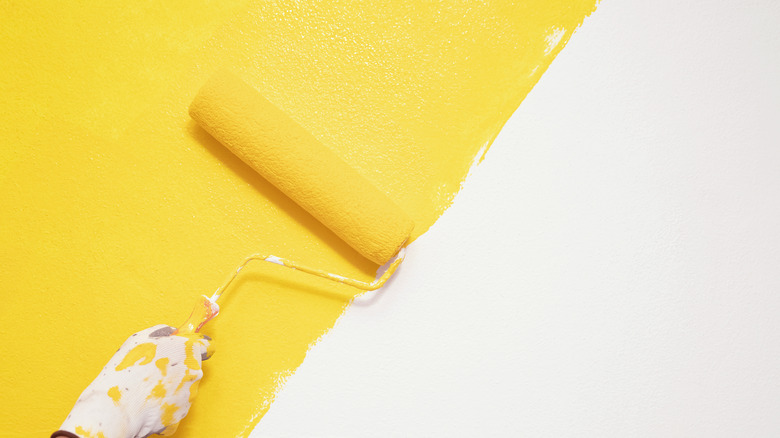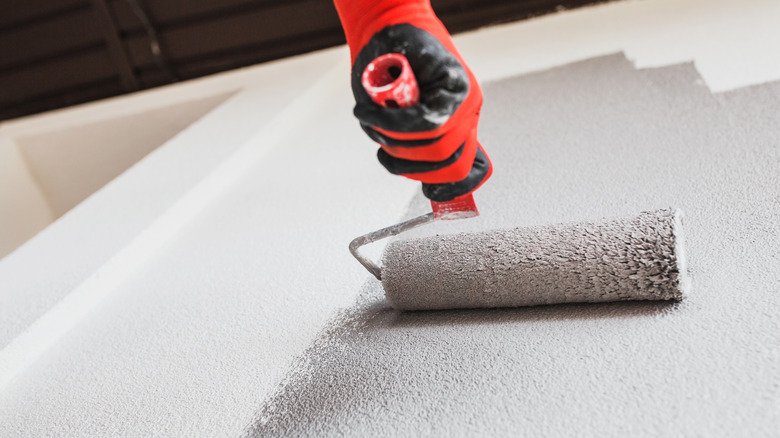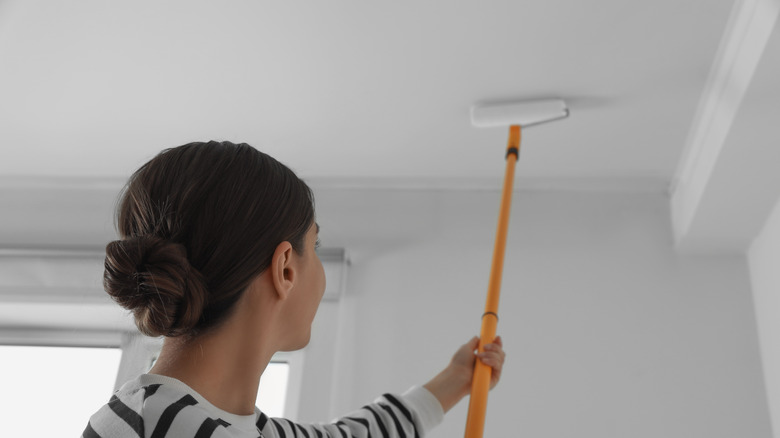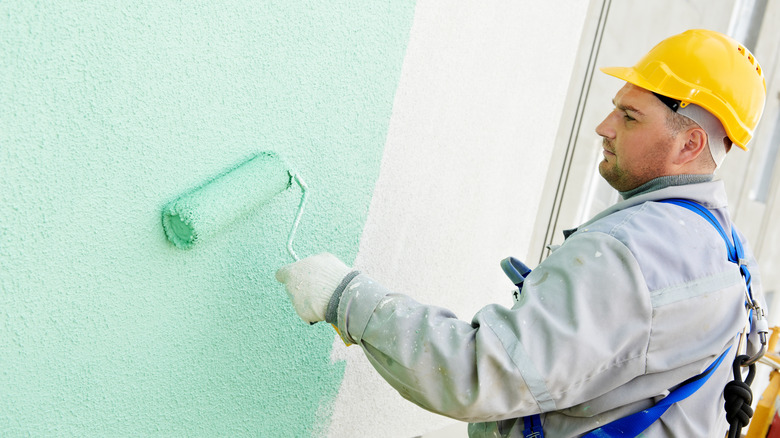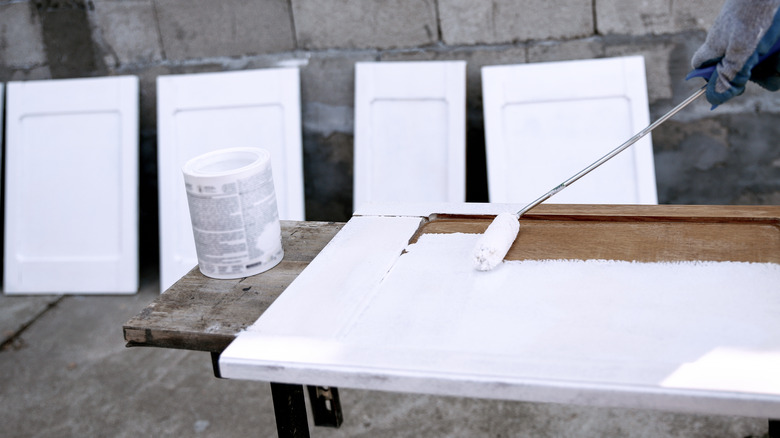The Best Roller For Your Painting Projects, According To An Expert
When it's time to add a fresh coat of paint to the walls of the living room or provide your child with a new, updated color that matches their personality, many people take on painting projects themselves, expecting an easy process. Some succeed, but it's not uncommon to run into a few problems along the way. Some of the most common painting mistakes people make, according to Lowes, include things like not using painter's tape to protect edges or not washing down the walls before applying paint to the surface. Conversely, you may have failed to buy enough paint or got a few splatters on the couch because you didn't protect it properly.
One mistake you don't want to make is buying the wrong tools for the job, especially an inferior roller that makes it hard for you to get professional-like painting results. In an exclusive interview with House Digest, Damon Lee, the owner of On A Roll Painting, offers his tips and strategies for buying the best paint rollers for your next project.
Roller basics
When you walk into the paint section at the home improvement store, you'll see many different roller options. Lee explains that "the best roller covers provide even coverage without splattering. This is dependent on the quality of the paint, the surface being painted, and the quality of the roller cover combined." Don't select the least expensive option and assume all are equal. Also, consider the nap, or the thickness of the roller over, as different thicknesses are better suited to various surfaces, suggests Home Depot.
Lee offers some specific tips to help you navigate the options. "Rollers vary in size from skinny 4-inch mini rollers to 18-inch behemoths. Knowing which one is best for your project is critical to providing a good finish," he explains. A good starting point is looking at the key features of each roller. "Shed-resistant covers are worth using; they don't leave fuzz behind, which is especially important with any paint with a sheen. And, because they are built with premium materials, they don't splatter as much as a polyester roller cover." However, he also warns to "avoid polyester — look for woven or knit for a better roller cover."
The best rollers for walls and ceilings
When buying paint rollers, consider where you intend to paint, as the application process can vary. Tailoring your selection to a roller that's properly suited for the job will improve the look of the finished piece. Lee shares, "for smooth walls and ceilings, use a 9-inch wide roller with 3/8- or ½-inch thickness for best results. We prefer using rollers with a knockdown texture — a 9 ½ or 9 ¾-inch thick cover will work well and help push paint into the edges of the textured surface." This type of roller will have a thicker nap that helps with adding paint to difficult areas.
Bigger rollers are not always the best option, though, and could lead to added work warns Lee. "An 18-inch roller cover is twice as wide as a standard roller but also has a wider diameter; it holds a lot more paint but is trickier to master. If you have a lot of work to do, this may be the answer for you, but it does require special roller frames and buckets." Compare several options before choosing, and be sure to look at the details, Lee shares. "Nap thickness guides from above still apply." Another option is to choose something much smaller, Lee notes. "The smallest, 4-inch mini rollers do come in handy for painting behind toilet tanks, appliances, radiators, and other hard-to-move items."
Tackling exterior walls
If you are planning to paint outdoors, you shouldn't use the same paint rollers as you do for interior walls. Lee shares that other options could speed up the paint application process. "Exterior walls require thicker naps in order to get more paint on the larger surfaces quicker. The pattern from the thicker nap isn't as important as an interior wall — exteriors typically aren't viewed as closely." That doesn't mean that inferior rollers are an okay choice. Choose quality products that are easy enough to manage and don't leave fuzz behind. Some may specifically be for outdoor walls.
Additionally, it's important to have the right technique for applying paint, or the roller could become a problem, explains Lee. "Just make sure the paint edges don't dry before the next section is painted, or there can be overlapping evidence left behind." Even coating is critical, especially when painting outdoors, as it tends to dry more quickly.
Cabinets, trim, and doors
Paint rollers can also be used to refresh wooden doors, cabinets, and trim, but to do so, you should choose a different style roller than for other types of projects, notes Lee. "Cabinets and other woodwork in the home need the shortest nap rollers. If you are painting flat panel doors, use a 9-inch roller." The short nap helps to give you more control over the amount of paint being added to the item while ensuring a more even application overall. Since these surfaces often get an up-close inspection by anyone walking by, it's worth it to invest some time to paint them perfectly.
Lee has a key recommendation. "We prefer to use Wooster Jumbo-Koter Mohair Blend. These are 4 ½ inches wide with a ¼-inch nap. This special frame and roller setup work like a 9-inch roller frame on a much smaller scale. Other mini roller frames consist of a metal bar that the roller cover fits tightly over and can be difficult to roll. The Wooster rolls smoothly, so it's faster and easier to get an even coat every time."
